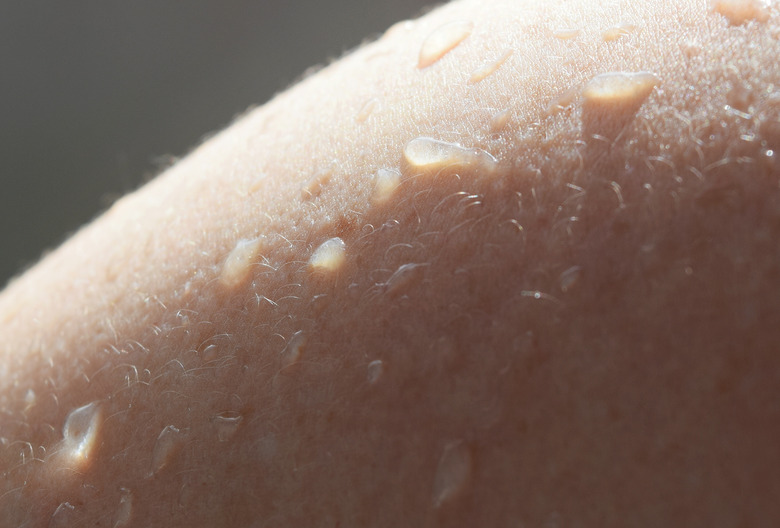How Is Water Formed During Cellular Respiration?
Cellular respiration is the key to life for living cells. Without it, cells would not have the energy they need to perform all the jobs they must do to stay alive. The processes and reactions of cellular respiration vary among organisms and are often quite complex. Understanding how water is formed during the process is critical for understanding how cellular respiration helps fuel living cells.
TL;DR (Too Long; Didn't Read)
Water is formed when hydrogen and oxygen react to form H2O during the electron transport chain, which is the final stage of cellular respiration.
Breaking Down Glucose
Breaking Down Glucose
Glycolysis is the first of three stages of cellular respiration. In it, a series of reactions break down glucose, or sugar, and turn it into molecules called pyruvate. Different organisms have different means of obtaining the glucose. Humans consume foods that contain sugars and carbohydrates, which the body then turns into glucose. Plants produce glucose during the process of photosynthesis.
Cells take glucose and combine it with oxygen to create four molecules of adenosine triphosphate, commonly referred to as ATP, and six molecules of carbon dioxide during glycolysis. ATP is the molecule that cells need to store and transfer energy. Additionally, two molecules of water are created during this step, but they are a byproduct of the reaction and not used in the next steps of cellular respiration. It is not until later in the process that more ATP and water are created.
Krebs Cycle
Krebs Cycle
The second step of cellular respiration is called the Krebs Cycle, which is also known as the citric acid cycle or the tricarboxylic acid (TCA) cycle. This stage takes place in the matrix of a cell's mitochondria. During the continuous Krebs Cycle, energy is transferred to two carriers, NADH and FADH2, an enzyme and coenzyme that play major roles in generating energy. Some people that have difficulty producing NADH, such as those with Alzheimer's, take NADH supplements as a way to boost alertness and concentration.
Grand Finale
Grand Finale
The electron transport chain is the third and final step of cellular respiration. It is the grand finale in which water is formed, along with the majority of ATP needed to power cellular life. It starts with NADH and FADH2 transporting protons through the cell, creating ATP through a series of reactions.
Toward the end of the electron transport chain, the hydrogen from the coenzymes meets the oxygen that the cell has consumed and reacts with it to form water. In this way, water is created as a byproduct of the metabolism reaction. The primary duty of cellular respiration is not to create that water but to provide cells with energy. However, water plays a critical role in plant and animal life, so it is important to consume water rather than to rely on cellular respiration to create as much water as your body needs.
Cite This Article
MLA
Dragani, Rachelle. "How Is Water Formed During Cellular Respiration?" sciencing.com, https://www.sciencing.com/water-formed-during-cellular-respiration-6245945/. 7 May 2018.
APA
Dragani, Rachelle. (2018, May 7). How Is Water Formed During Cellular Respiration?. sciencing.com. Retrieved from https://www.sciencing.com/water-formed-during-cellular-respiration-6245945/
Chicago
Dragani, Rachelle. How Is Water Formed During Cellular Respiration? last modified March 24, 2022. https://www.sciencing.com/water-formed-during-cellular-respiration-6245945/
